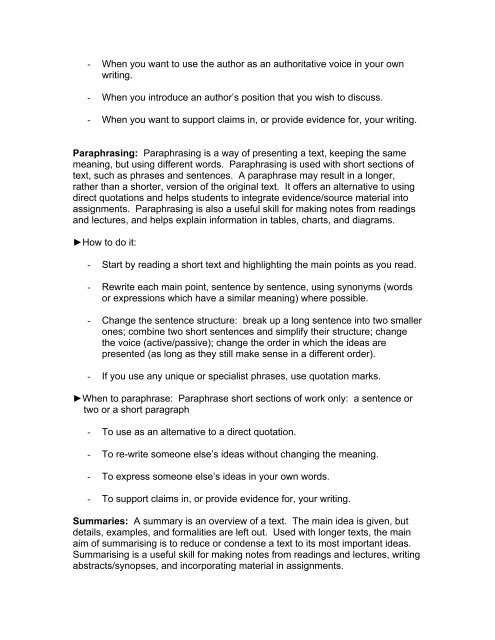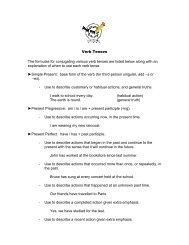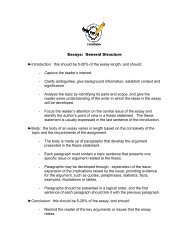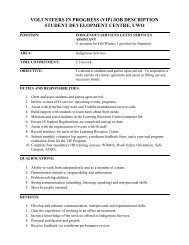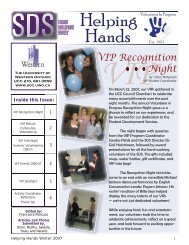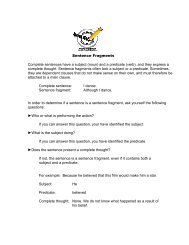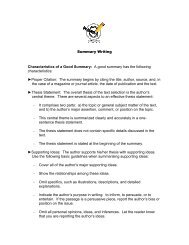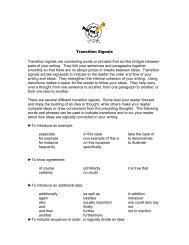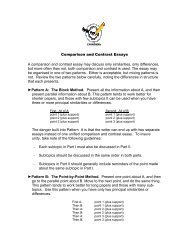Quoting, Paraphrasing and Summarising Summarising and ...
Quoting, Paraphrasing and Summarising Summarising and ...
Quoting, Paraphrasing and Summarising Summarising and ...
- No tags were found...
Create successful ePaper yourself
Turn your PDF publications into a flip-book with our unique Google optimized e-Paper software.
- When you want to use the author as an authoritative voice in your ownwriting.- When you introduce an author’s position that you wish to discuss.- When you want to support claims in, or provide evidence for, your writing.<strong>Paraphrasing</strong>: <strong>Paraphrasing</strong> is a way of presenting a text, keeping the samemeaning, but using different words. <strong>Paraphrasing</strong> is used with short sections oftext, such as phrases <strong>and</strong> sentences. A paraphrase may result in a longer,rather than a shorter, version of the original text. It offers an alternative to usingdirect quotations <strong>and</strong> helps students to integrate evidence/source material intoassignments. <strong>Paraphrasing</strong> is also a useful skill for making notes from readings<strong>and</strong> lectures, <strong>and</strong> helps explain information in tables, charts, <strong>and</strong> diagrams.►How to do it:- Start by reading a short text <strong>and</strong> highlighting the main points as you read.- Rewrite each main point, sentence by sentence, using synonyms (wordsor expressions which have a similar meaning) where possible.- Change the sentence structure: break up a long sentence into two smallerones; combine two short sentences <strong>and</strong> simplify their structure; changethe voice (active/passive); change the order in which the ideas arepresented (as long as they still make sense in a different order).- If you use any unique or specialist phrases, use quotation marks.►When to paraphrase: Paraphrase short sections of work only: a sentence ortwo or a short paragraph- To use as an alternative to a direct quotation.- To re-write someone else’s ideas without changing the meaning.- To express someone else’s ideas in your own words.- To support claims in, or provide evidence for, your writing.Summaries: A summary is an overview of a text. The main idea is given, butdetails, examples, <strong>and</strong> formalities are left out. Used with longer texts, the mainaim of summarising is to reduce or condense a text to its most important ideas.<strong>Summarising</strong> is a useful skill for making notes from readings <strong>and</strong> lectures, writingabstracts/synopses, <strong>and</strong> incorporating material in assignments.


